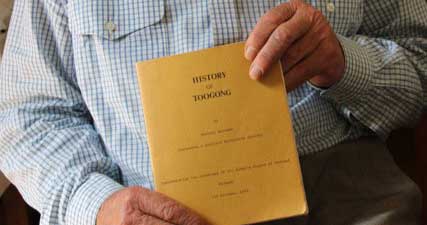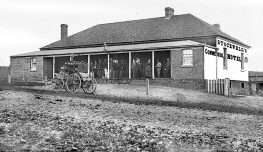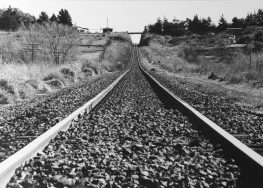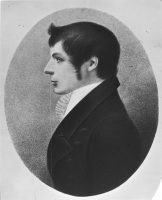Toogong cricket ground was the village meeting place – Harold Balcomb

‘The thing that really impressed me going back to Toogong for Anzac Day is that it’s become a centre again of community.’
Harold Balcomb, Toogong

Image courtesy Marg Carroll
My earliest memories of Toogong were centred around the Post Office because we all had party lines and the postmistress knew everything that went on. We were quite friendly with the Hazelton family who were farmers at Toogong, and my sister married Bruce Hazelton and my cousin married Kerry Hazelton. So there were a few ‘crossed lines’ there. I grew up in a very small community where we had a young people’s club and we had debates and learnt how to do moving/leading procedures.
I enjoyed playing tennis at both the Toogong courts and the Hazelton courts. And the cricket ground was a meeting place where all the village came together, and wives and children looked on and it was a social occasion for a weekend.
It was a Saturday competition at Canowindra and Toogong had a team after the Second World War, and Cranbury had a team and there was another team from Cargo, and Canowindra had about three teams. Canowindra would come out on the back of a ute – occupational health and safety didn’t rate much then! And I remember once Norman Nash took us to Gumble to play a game of cricket and he took us in the back of a truck sitting on hay bales.
I came home from school because my father had rheumatic fever in 1937 and we had to have three men working for us in 38-39. While he was off work my sister and mother worked very hard during the war years keeping the farm going, and it was axiomatic that I came home.
When I was growing up we were self-sufficient: we milked our own cows, killed our own meat and had an orchard and preserved fruit. In the Depression years in the 30s, when I was a child, to buy goods was frowned upon; you only bought absolute necessities from the store and you produced everything that you ate, virtually.
I think we did eat well but we worked hard. But I can remember lots of swaggies on the road, and mum would always give them something.
In those days you had to keep moving if you were unemployed. You couldn’t be a vagrant and stay in the one place. You had to move from centre to centre to draw the dole. I can remember whole families going down the road to Toogong. They had to move from Canowindra to Cudal to get the next dole; they couldn’t just stay in Canowindra or they would be charged with vagrancy. Some individuals just walked and camped wherever they came to. That was a terrible period.
I can remember one little girl who came up to my father and she wanted some milk and Dad was just milking the cow. She must have been primed up to say ‘Is it fresh?’ because she must have been given some sour milk. Dad tipped it out of the bucket and said, ‘You won’t get it much fresher than that, love’
The thing that really impressed me going back to Toogong for Anzac Day is that it’s become a centre again of community. People come from Manildra, Molong and everywhere to attend the Anzac service. The Irvine Memorial has got special memories for me because at the battle of Fromelles, my father was taken prisoner and my mother’s cousin was killed and another cousin wounded and later killed. I’m named after Harold Whitmee who was Mum’s cousin. All those names are on the Toogong memorial so that’s got special memories for the family. As you get older you appreciate this more than you do when you’re young.
Interviewed by Marg Carroll










